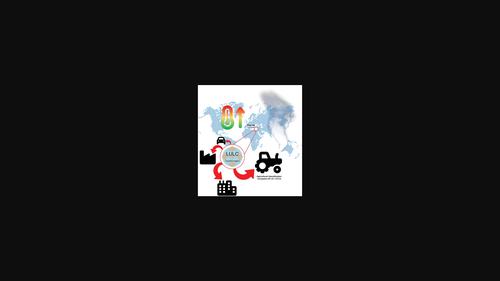当前位置:
X-MOL 学术
›
Clean - Soil Air Water
›
论文详情
Our official English website, www.x-mol.net, welcomes your
feedback! (Note: you will need to create a separate account there.)
Thermal Response to Land-Use Land-Cover Patterns: An Experimental Study in Famagusta, Cyprus
Clean - Soil Air Water ( IF 1.5 ) Pub Date : 2022-07-31 , DOI: 10.1002/clen.202100284 Kamyar Fuladlu 1, 2
Clean - Soil Air Water ( IF 1.5 ) Pub Date : 2022-07-31 , DOI: 10.1002/clen.202100284 Kamyar Fuladlu 1, 2
Affiliation

|
The transformation of land-use land-cover (LULC), as induced by human and natural processes, drives the biogeochemistry of Earth and influences the complex interaction between many factors. The most significant outcomes of these interactions are the thermal responses and changes in land-surface temperature (LST). The consequences of these factors can be seen in both global and regional scale changes in climate—remote sensing methods are widely used in constraining these changes and, thus, there is an increasing shift toward LULC studies. This study uses a hybrid method to investigate the thermal responses to LULC patterns by analyzing LST. This method combined the normalized difference vegetation index, normalized difference built-up index, normalized difference barrenness index, and normalized difference moisture index, and is then applied to a study area in Famagusta, Cyprus. The results of this study can help to guide future development and land-use optimization, in Famagusta or any other area in which the method is applied. The study results show that agricultural intensification contributes to increased LST (
中文翻译:

对土地利用土地覆盖模式的热响应:在塞浦路斯法马古斯塔的一项实验研究
由人类和自然过程引起的土地利用土地覆被(LULC)的转变驱动着地球的生物地球化学,并影响着许多因素之间的复杂相互作用。这些相互作用最重要的结果是热响应和地表温度 (LST) 的变化。这些因素的后果可以在气候的全球和区域尺度变化中看到——遥感方法被广泛用于限制这些变化,因此,越来越多地转向 LULC 研究。本研究使用混合方法通过分析 LST 来研究对 LULC 模式的热响应。该方法结合了归一化差异植被指数、归一化差异堆积指数、归一化差异贫瘠指数和归一化差异水分指数,然后应用于塞浦路斯法马古斯塔的一个研究区域。这项研究的结果可以帮助指导法马古斯塔或应用该方法的任何其他地区的未来发展和土地利用优化。研究结果表明,农业集约化有助于提高 LST (
更新日期:2022-07-31
中文翻译:

对土地利用土地覆盖模式的热响应:在塞浦路斯法马古斯塔的一项实验研究
由人类和自然过程引起的土地利用土地覆被(LULC)的转变驱动着地球的生物地球化学,并影响着许多因素之间的复杂相互作用。这些相互作用最重要的结果是热响应和地表温度 (LST) 的变化。这些因素的后果可以在气候的全球和区域尺度变化中看到——遥感方法被广泛用于限制这些变化,因此,越来越多地转向 LULC 研究。本研究使用混合方法通过分析 LST 来研究对 LULC 模式的热响应。该方法结合了归一化差异植被指数、归一化差异堆积指数、归一化差异贫瘠指数和归一化差异水分指数,然后应用于塞浦路斯法马古斯塔的一个研究区域。这项研究的结果可以帮助指导法马古斯塔或应用该方法的任何其他地区的未来发展和土地利用优化。研究结果表明,农业集约化有助于提高 LST (











































 京公网安备 11010802027423号
京公网安备 11010802027423号